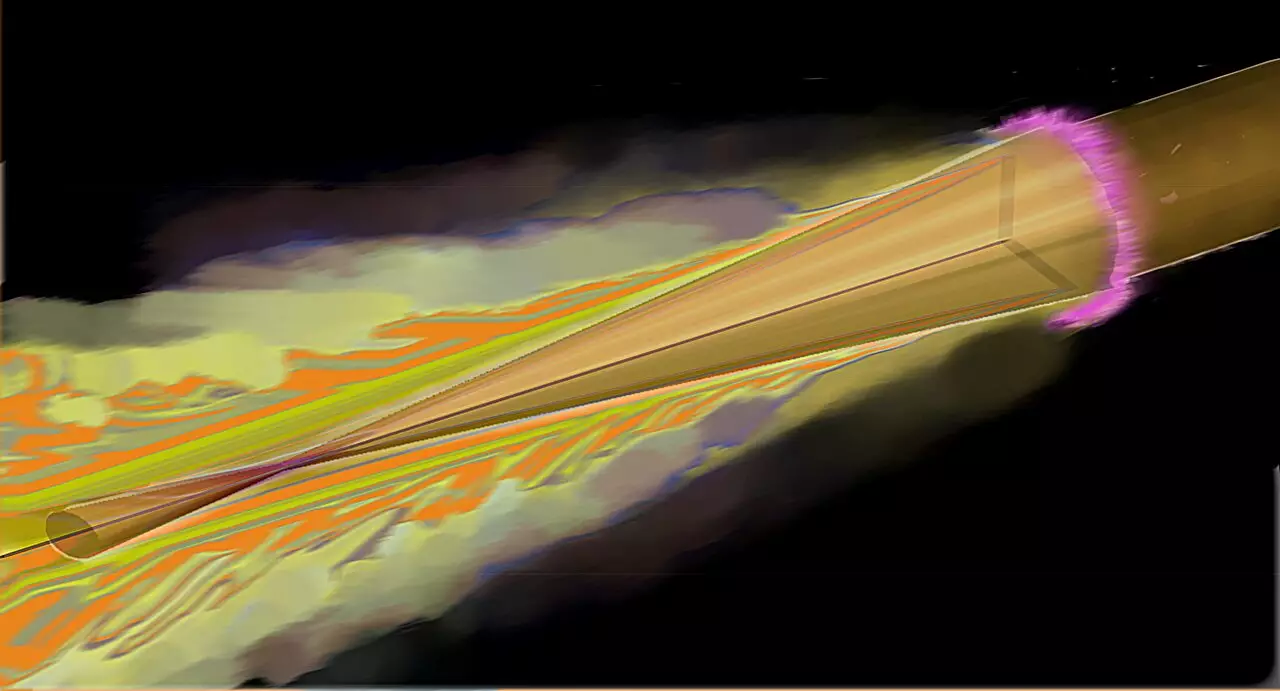The study of extreme conditions, akin to those found within stars and planets, has traditionally posed significant challenges to scientists. Such environments are characterized by immense pressures, often reaching millions of bars, and temperatures that can soar into the millions of degrees Celsius. Until recently, exploring these states of matter relied heavily on sophisticated and powerful laser systems, like the National Ignition Facility (NIF) in California, which are few and far between. However, new research spearheaded by the Helmholtz-Zentrum Dresden-Rossendorf (HZDR) and the European XFEL has made remarkable strides in this field, utilizing smaller, more accessible laser technology to replicate these elusive conditions.
The research conducted by the HZDR team harnesses a remarkably thin copper wire—just 25 micrometers thick—as a key component in creating extreme conditions in the laboratory. This novel approach substitutes the need for large, complex equipment by employing a method that involves firing ultra-short laser pulses at this copper wire. The pulses, which last only 30 femtoseconds, produce a staggering output of 100 terawatts despite their relatively low energy of about one joule. This combination of advanced laser technology and strategic material selection allows researchers to ignite shock waves within the wire, simulating the high-pressure environments typically found at the core of planets and in stellar interiors.
Understanding the intricate processes involved is fundamental to grasping the significance of this research. Upon contact with the laser pulse, the copper wire experiences a localized shock wave that moves through the material, akin to a miniature explosion. Dr. Alejandro Laso Garcia, the lead author of the study, highlights the pivotal role of ultra-strong X-ray facilities, like the European XFEL, in observing these rapid changes. The combination of laser and X-ray technologies enables scientists to capture a detailed sequence of events, effectively creating an “X-ray film” of the processes occurring within the wire.
When the laser pulse strikes, high-energy electrons are generated, which then accelerate along the surface of the wire. This rapid movement causes additional shock waves, which converge towards the center. The result is a remarkable compression, with densities reaching eight to nine times that of normal copper. This phenomenon allows scientists to recreate conditions akin to the pressures found in stellar environments, achieving an impressive 800 megabars—equivalent to 800 million times atmospheric pressure.
The relevance of these findings extends beyond laboratory walls. The temperatures recorded during the experiments, scaling up to around 100,000 degrees Celsius, mirror those found in white dwarf star coronas. Such insights are not merely academic; they could illuminate our understanding of the interiors of massive gas giants, including Jupiter and recently discovered exoplanets. This could be pivotal, as researchers aim to decipher the complexities of planetary formation and evolution in a universe marked by diversity.
Broader Applications and Future Prospects
The technological advancements demonstrated in this study don’t just cater to astrophysics; they present exciting opportunities for fusion research. The ability to generate high densities and temperatures across various materials signifies a crucial leap for projects exploring clean energy through fusion. Ulf Zastrau, leading the High Energy Density (HED) group at the European XFEL, emphasizes the potential for this method to enhance our understanding of fusion processes, which involve firing laser flashes at hydrogen fuel capsules to initiate reactions that produce more energy than is consumed.
Driven by the collaborative efforts of multiple research teams and enterprises worldwide, the pursuit of fusion power has regained momentum. The precision and insight available from this new experimental approach could revolutionize how we observe and understand the dynamics within fusion capsules, marking an important milestone in the journey toward achieving sustainable, clean energy.
In closing, the innovative use of a simple copper wire and short laser pulses represents a transformative breakthrough in the study of extreme conditions. Researchers have not only succeeded in generating conditions mimicking those in celestial bodies but have also paved the way for future applications in both astrophysics and energy research. As this field continues to evolve, the potential for profound discoveries that advance our understanding of the universe and provide solutions to energy challenges remains tantalizingly within reach.

